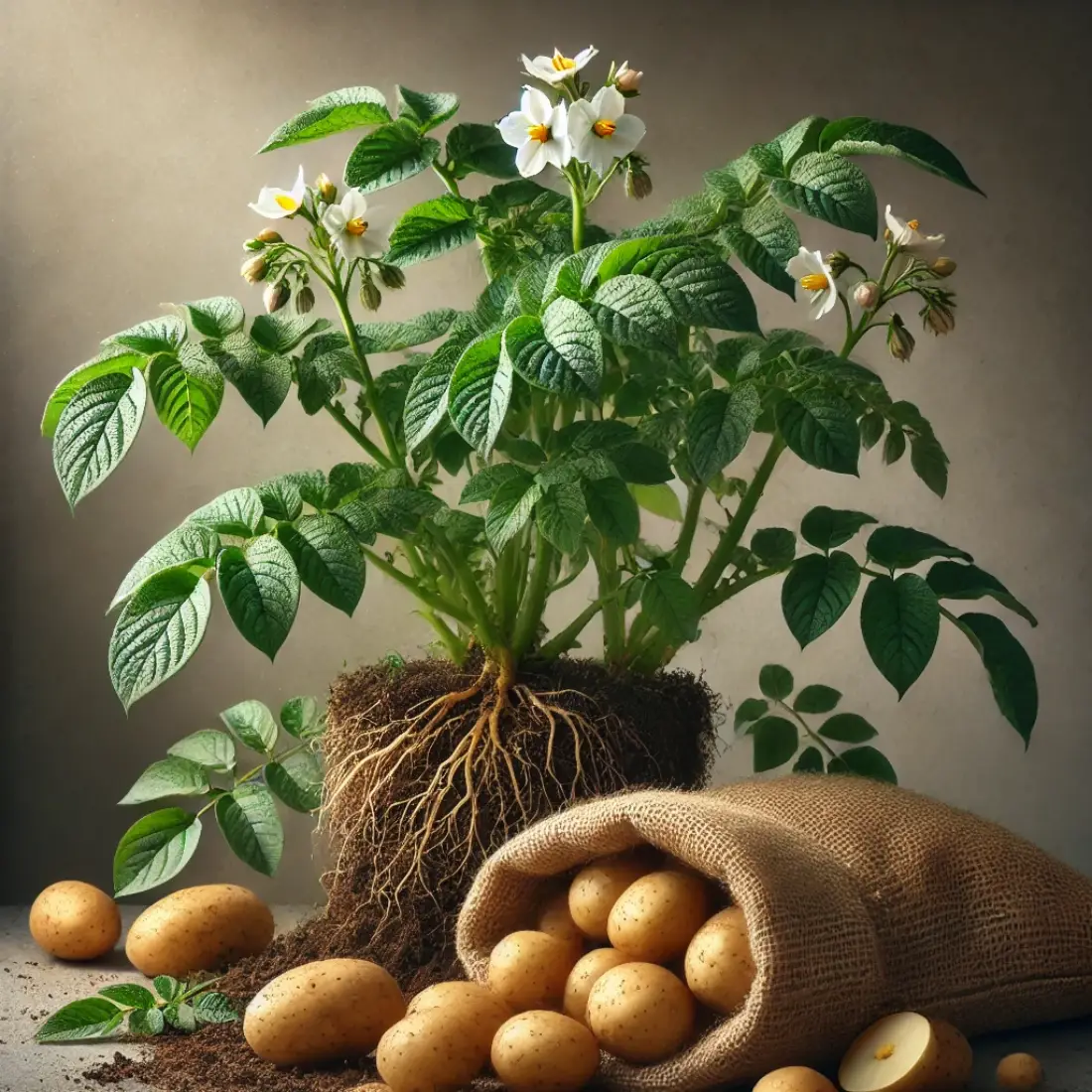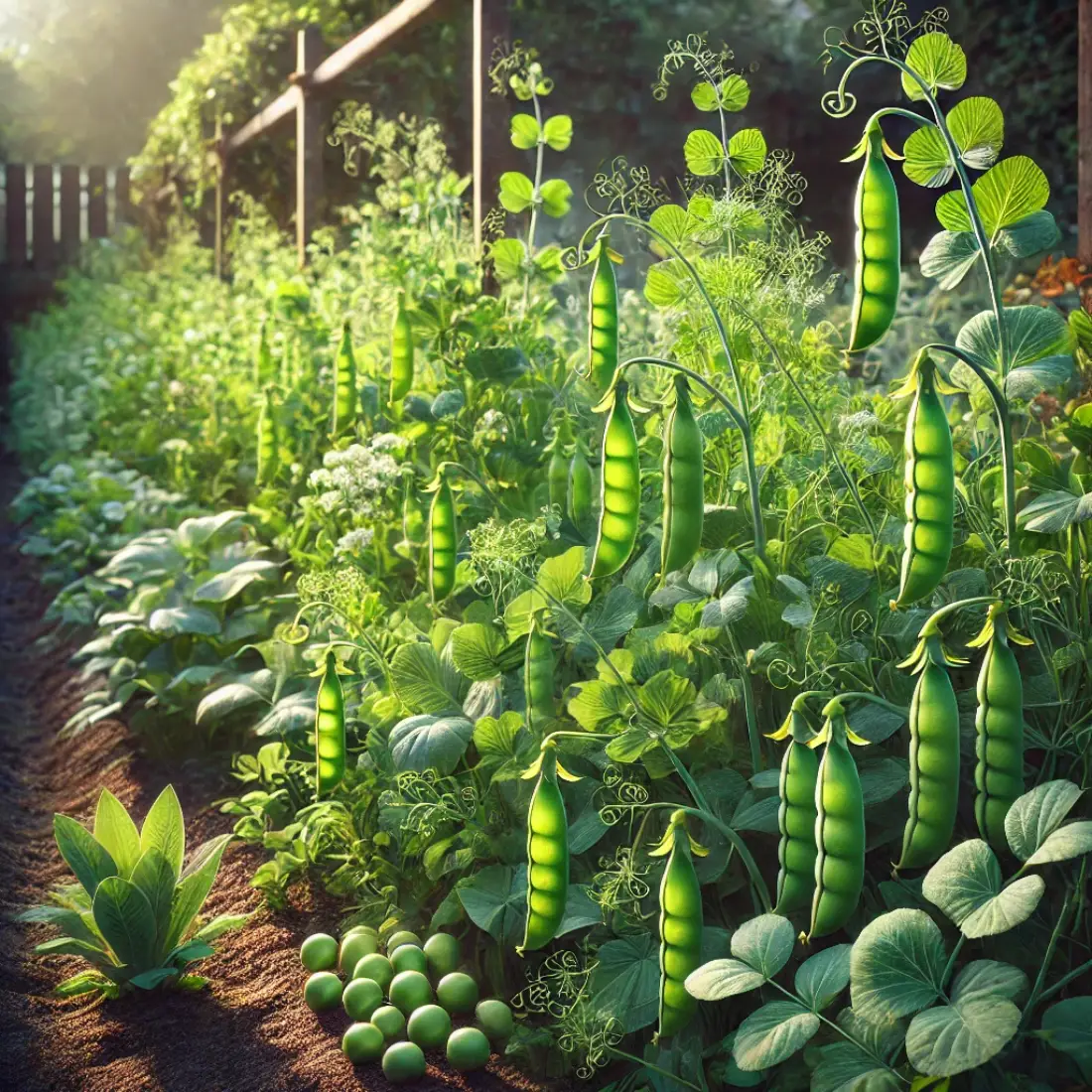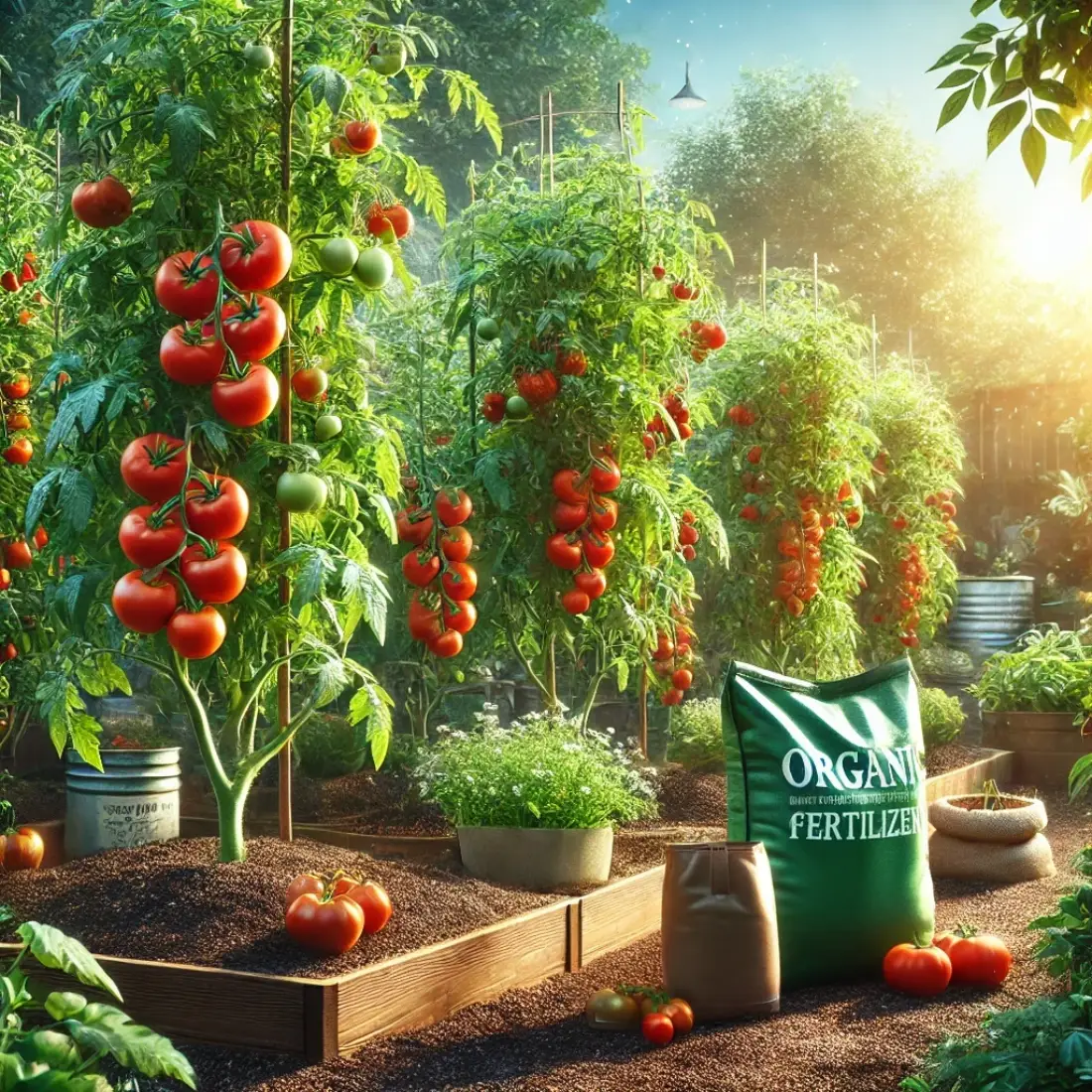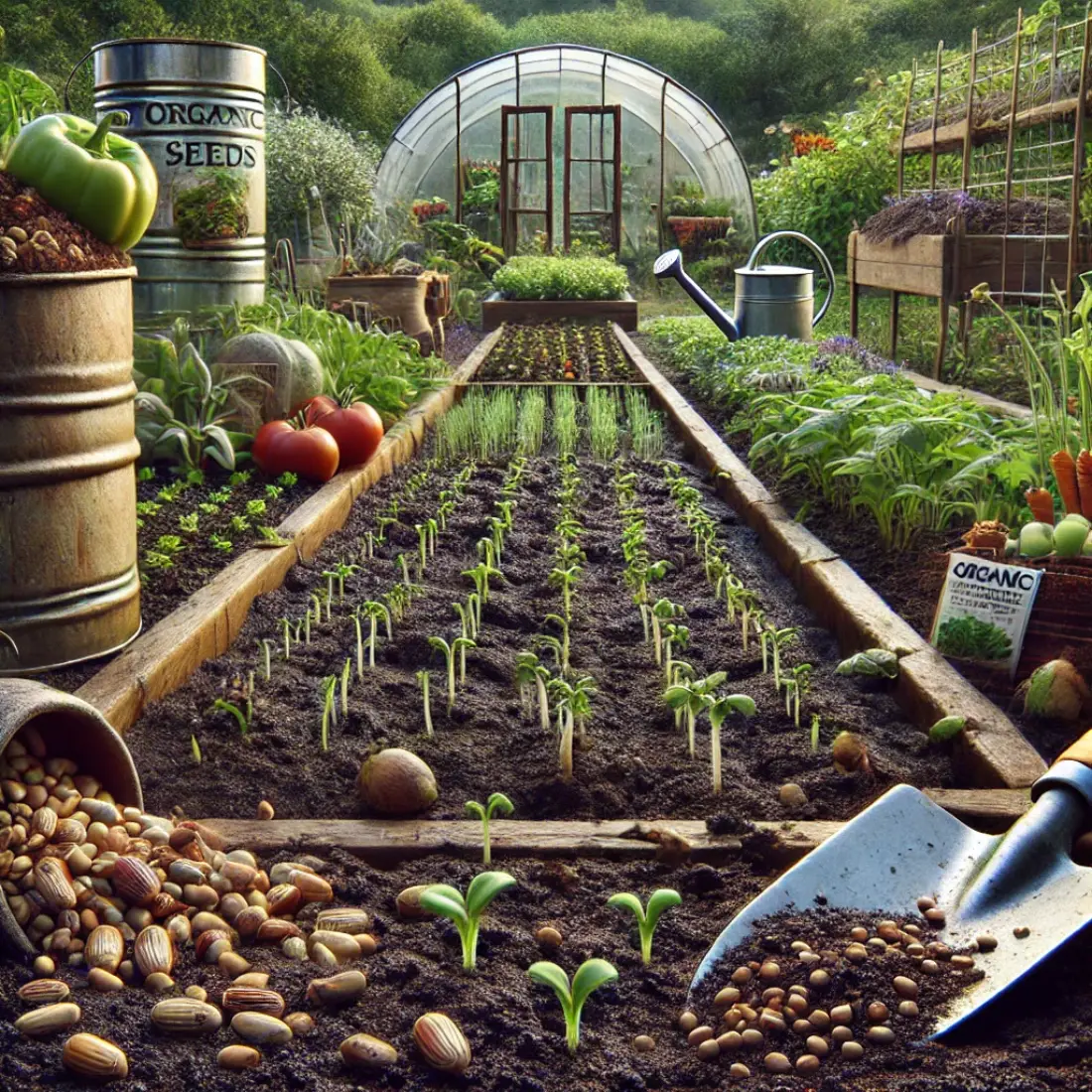Growing potatoes at home can be both a rewarding and cost-effective endeavor. Potatoes are a versatile staple that can be grown in a variety of environments, including gardens, pots, and even bags.
- Growing potatoes at home is easy and rewarding.
- You can grow potatoes in various settings, including gardens, pots, and bags.
- Understanding the right conditions and care will ensure a bountiful harvest.
Preparation and Planting
Selecting the Right Potato Variety
Choosing the right potato variety is crucial for a successful harvest. Different varieties have unique characteristics, such as flavor, texture, and growth habits. Popular choices include russet potatoes for baking, red potatoes for boiling and salads, and fingerling potatoes for roasting. Consider your climate and space when selecting a variety, as some potatoes thrive better in certain conditions.
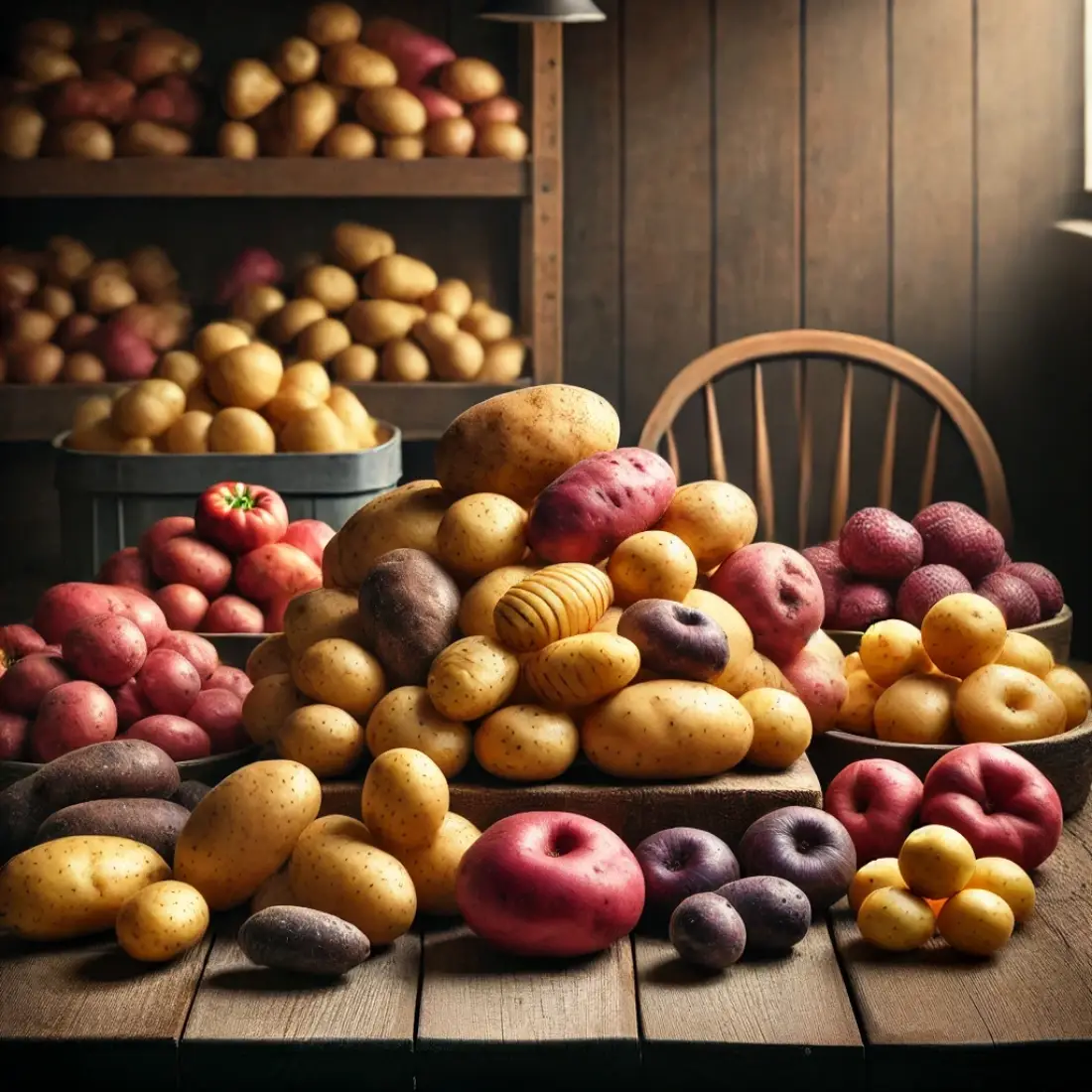
Preparing the Soil
Potatoes grow best in well-drained, fertile soil with a slightly acidic pH (5.0-6.5). Start by testing your soil’s pH and amending it if necessary. Incorporate organic matter, such as compost or aged manure, to improve soil structure and fertility. This helps to provide the necessary nutrients for healthy potato growth.
Choosing the Planting Method
Potatoes can be grown in various ways, each with its own benefits:
- Traditional Garden Beds: Ideal for those with ample garden space. Ensure the soil is loose and well-drained.
- Raised Beds: Excellent for controlling soil quality and drainage. They also make harvesting easier.
- Containers and Grow Bags: Perfect for small spaces, patios, or urban gardens. Ensure good drainage and use high-quality potting mix.

Planting Seed Potatoes
Start with certified seed potatoes to avoid diseases and ensure a healthy crop. Here’s how to prepare and plant them:
- Sourcing Seed Potatoes: Purchase from reputable suppliers.
- Pre-Sprouting (Chitting): Place seed potatoes in a cool, light area for 2-3 weeks until they develop sprouts.
- Cutting Seed Potatoes: If large, cut into pieces with at least two eyes each. Let them dry for a day to prevent rotting.
- Planting: Dig trenches or holes about 4-6 inches deep and 12 inches apart. Place the seed potatoes with sprouts facing up, then cover with soil.
Growing and Maintenance
Watering and Fertilizing
Consistent moisture is crucial for healthy potato growth. Water the plants deeply once a week, ensuring the soil remains moist but not waterlogged. Organic mulching with straw or grass clippings helps retain soil moisture and reduces weed growth.
For fertilizing, use organic options like compost, aged manure, or fish emulsion. Apply compost at planting time and side-dress with aged manure or compost mid-season. Avoid high-nitrogen fertilizers, as they promote foliage growth at the expense of tubers.
Hilling Potatoes
Hilling is essential to protect developing tubers from sunlight and prevent them from turning green and becoming toxic. When the plants reach about 6 inches tall, gently mound soil around the base, covering the lower leaves.
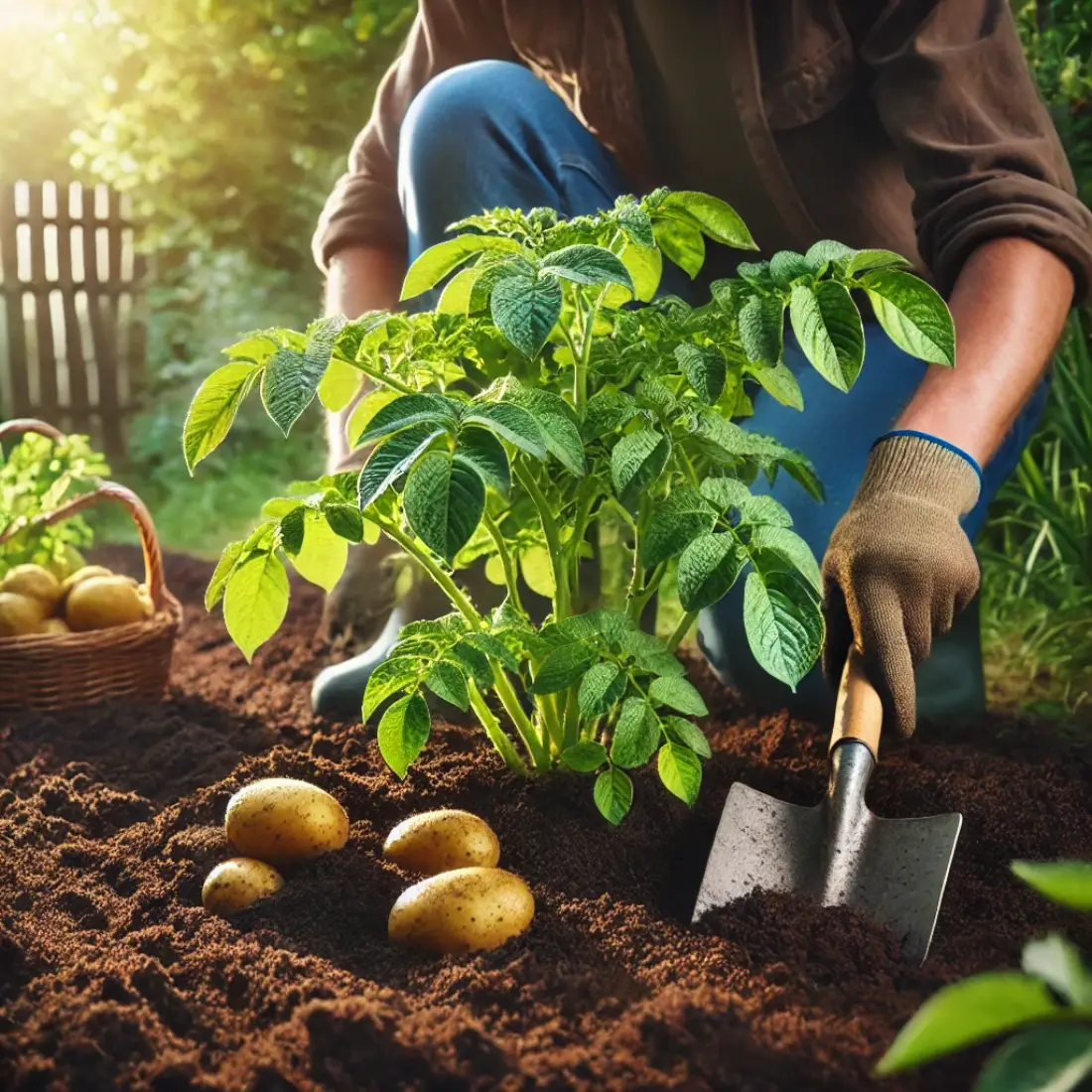
Repeat this process every few weeks as the plants grow, until you’ve created a mound about 12 inches high. This encourages more tuber production and keeps them well-covered.
Managing Pests and Diseases
Organic pest and disease management is vital for healthy potato plants:
Pests: Common pests include the Colorado potato beetle and aphids. Use organic insecticidal soap to control aphids and handpick beetles from plants. Introduce beneficial insects like ladybugs to naturally manage pest populations.

Diseases: Common diseases include blight and scab. Prevent blight by ensuring good air circulation and avoiding overhead watering. Rotate crops annually to reduce disease buildup in the soil. For scab, maintain soil pH on the acidic side (5.0-5.5).
Organic Pest Control Methods
- Neem Oil: Apply neem oil to repel and kill a variety of pests.
- Companion Planting: Plant herbs like basil and marigolds around potatoes to deter pests.
- Natural Predators: Encourage birds and beneficial insects in your garden to keep pest populations in check.
Harvesting and Storage
When and How to Harvest
Knowing when and how to harvest your potatoes ensures you get the best quality tubers:
- Maturity Signs: Potatoes are typically ready to harvest when the plant foliage turns yellow and begins to die back. This usually occurs 70-120 days after planting, depending on the variety.
- Harvesting Technique: For new potatoes, carefully dig around the base of the plants about two weeks after they flower. For mature potatoes, wait until the foliage has completely died back. Use a garden fork to gently lift the plants and expose the tubers. Handle them carefully to avoid bruising.
Curing and Storing Potatoes
Proper curing and storage methods can extend the shelf life of your potatoes:
- Curing: After harvesting, let the potatoes cure in a dark, well-ventilated area at 60-65°F (15-18°C) with high humidity for 1-2 weeks. This process toughens the skin and helps heal minor cuts and bruises.
- Storage Conditions: Once cured, store potatoes in a cool, dark, and well-ventilated place. Ideal storage conditions are 40-45°F (4-7°C) with high humidity (85-90%). Avoid storing potatoes near onions, as they can cause each other to spoil more quickly.
- Long-Term Storage Tips: Regularly check stored potatoes for signs of spoilage, and remove any that are soft, shriveled, or sprouting. Using burlap sacks or perforated bins can help maintain the proper humidity and airflow.
Growing Potatoes Year-Round
To enjoy homegrown potatoes throughout the year, consider these advanced growing methods:
- Indoor Growing: Grow potatoes indoors using containers with drainage holes and high-quality potting soil. Place containers in a sunny spot or under grow lights. Maintain consistent watering and use organic fertilizer.
- Greenhouses and Cold Frames: Extend your growing season by planting potatoes in greenhouses or cold frames. These structures provide a controlled environment, protecting plants from frost and extreme weather. Use organic mulch to retain moisture and regulate soil temperature.
Companion Planting and Crop Rotation
Implementing companion planting and crop rotation can enhance potato growth and soil health:
- Companion Plants: Certain plants can improve the health and yield of your potato crop. Planting beans, corn, and cabbage near potatoes can deter pests and improve soil nutrients. Avoid planting potatoes near tomatoes, peppers, and eggplants, as they can share diseases.
- Crop Rotation: Rotating crops annually helps prevent soil depletion and reduces the risk of pests and diseases. Avoid planting potatoes in the same spot more than once every three years. Rotate with nitrogen-fixing plants like legumes to improve soil fertility.
FAQs about Potatoes
How long does it take to grow potatoes?
Potatoes typically take 70-120 days to mature, depending on the variety and growing conditions.
Can I grow potatoes from store-bought potatoes?
While it is possible, it is not recommended due to potential diseases and chemical treatments. Certified seed potatoes are best for healthy growth.
What are the best conditions for growing potatoes?
Potatoes need well-drained soil, full sun, and consistent moisture. Avoid waterlogged conditions and ensure good air circulation around plants.
How deep should I plant seed potatoes?
Plant seed potatoes about 4-6 inches deep. This depth helps protect the tubers and encourages strong root development.
How often should I water my potato plants?
Potatoes need about 1-2 inches of water per week. Keep the soil consistently moist but not waterlogged, and use mulch to retain moisture.
What should I do if my potato plants get pests?
Use organic pest control methods like handpicking, neem oil, and introducing beneficial insects to manage pests such as Colorado potato beetles and aphids.
Can I grow potatoes in containers?
Yes, potatoes can be grown in containers and grow bags. Ensure good drainage and use high-quality potting soil. Container-grown potatoes require more frequent watering.
When is the best time to harvest potatoes?
Harvest new potatoes about two weeks after the plants flower. For mature potatoes, wait until the foliage has died back completely, usually 70-120 days after planting.
How do I store harvested potatoes?
After harvesting, cure potatoes in a dark, well-ventilated area at 60-65°F for 1-2 weeks. Then, store them in a cool, dark place at 40-45°F with high humidity.
Why are my potato plants turning yellow?
Yellowing leaves can be a sign of overwatering, nutrient deficiencies, or diseases. Check soil moisture levels, provide balanced organic fertilizer, and inspect plants for signs of pests or diseases.

